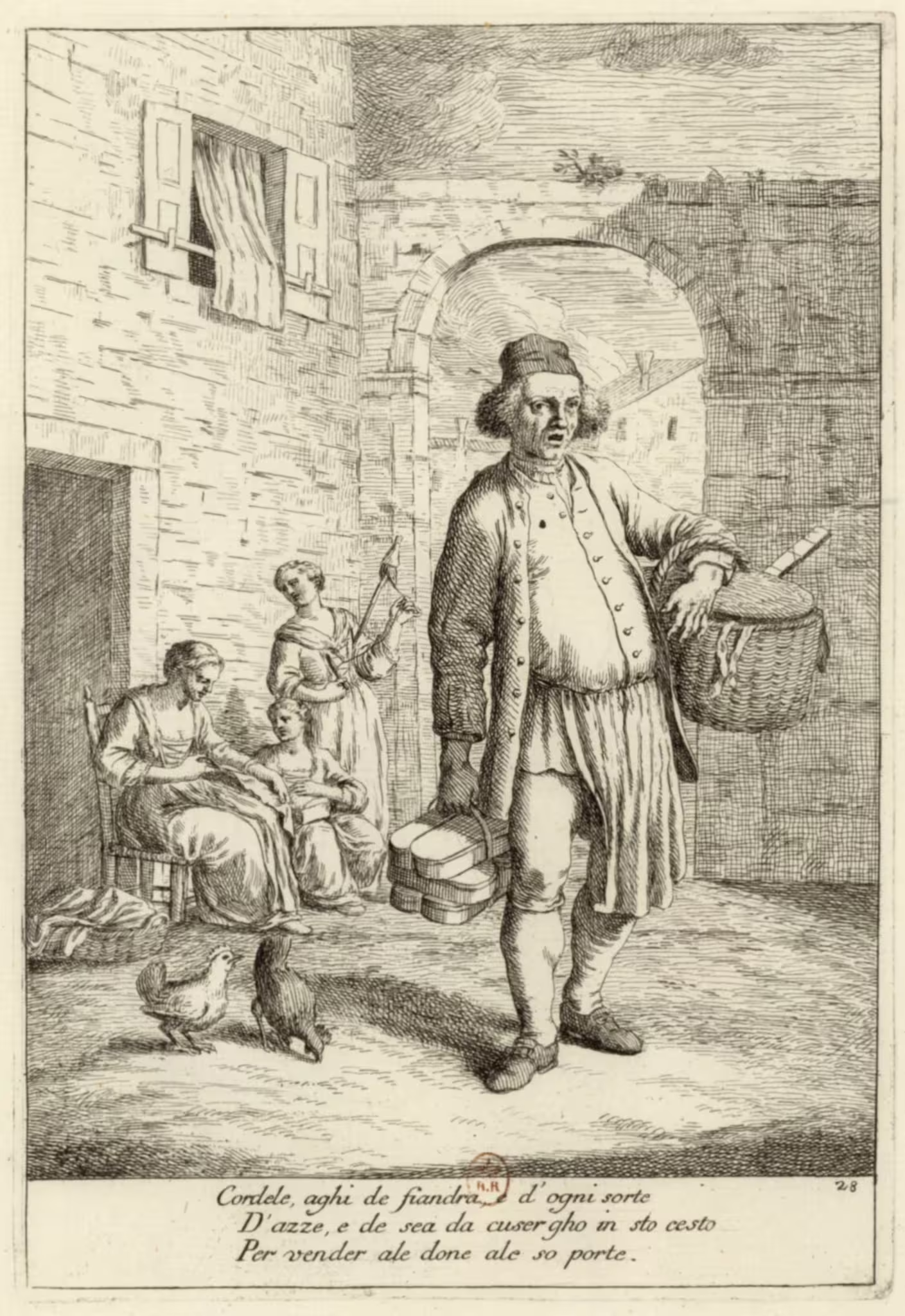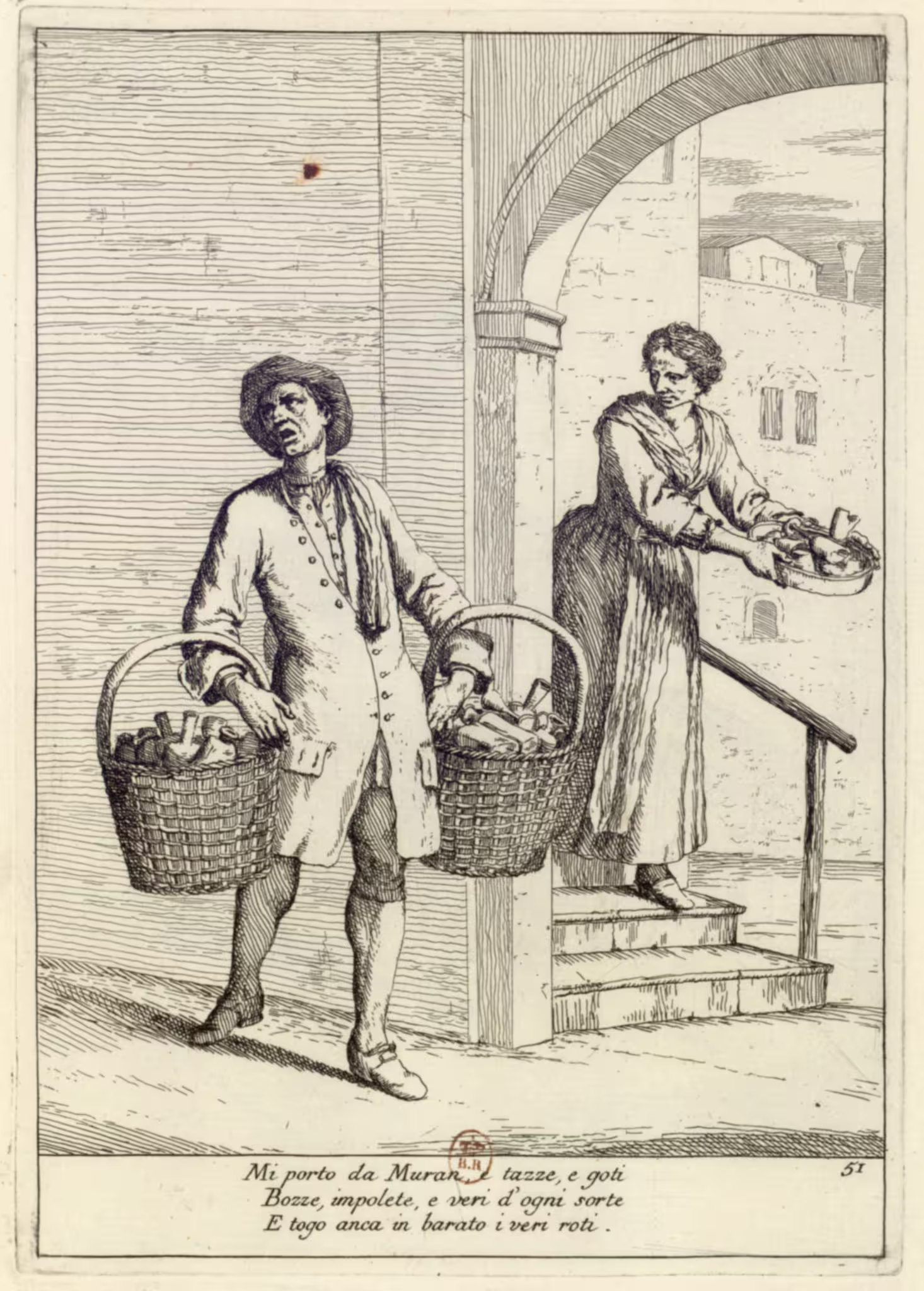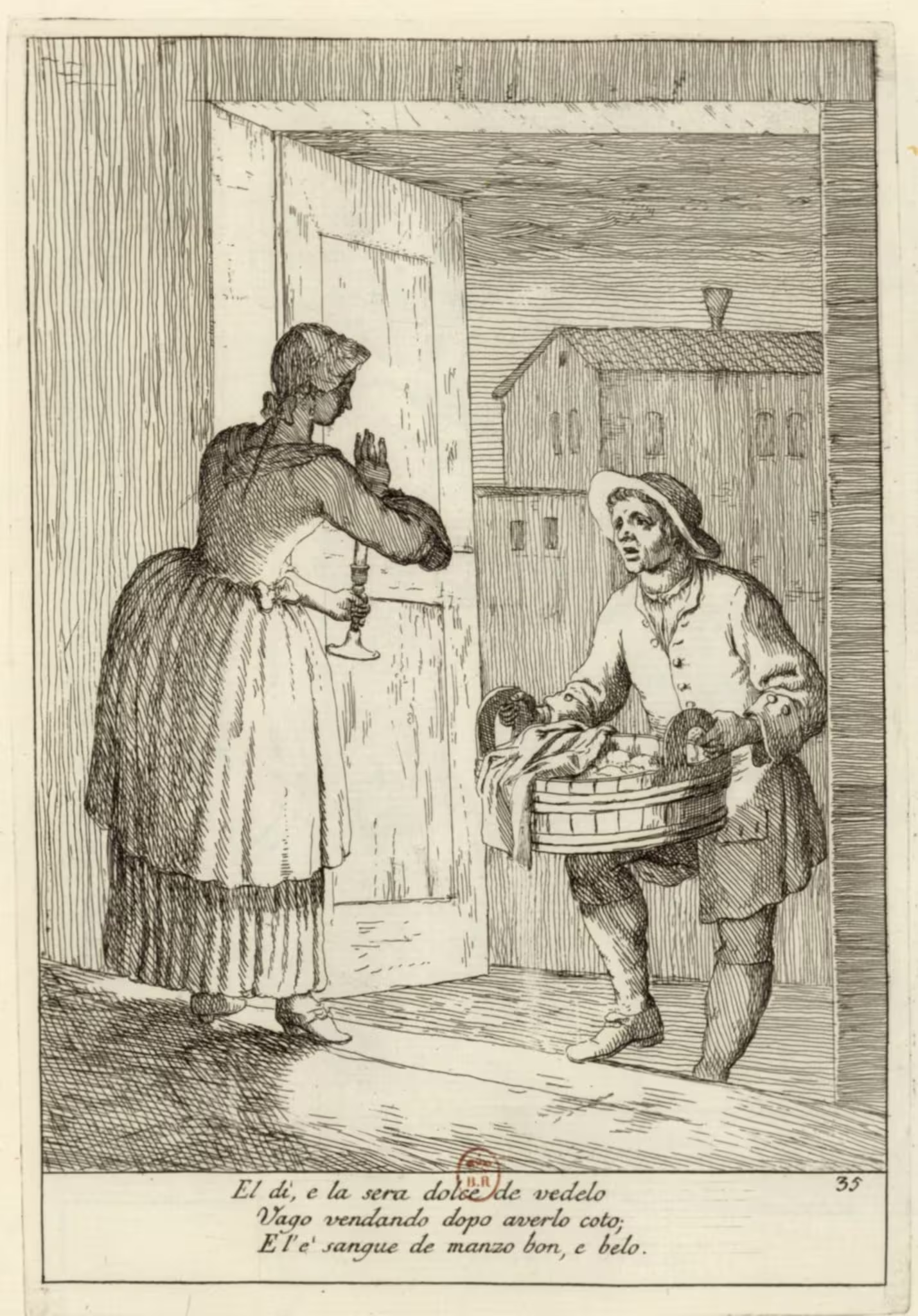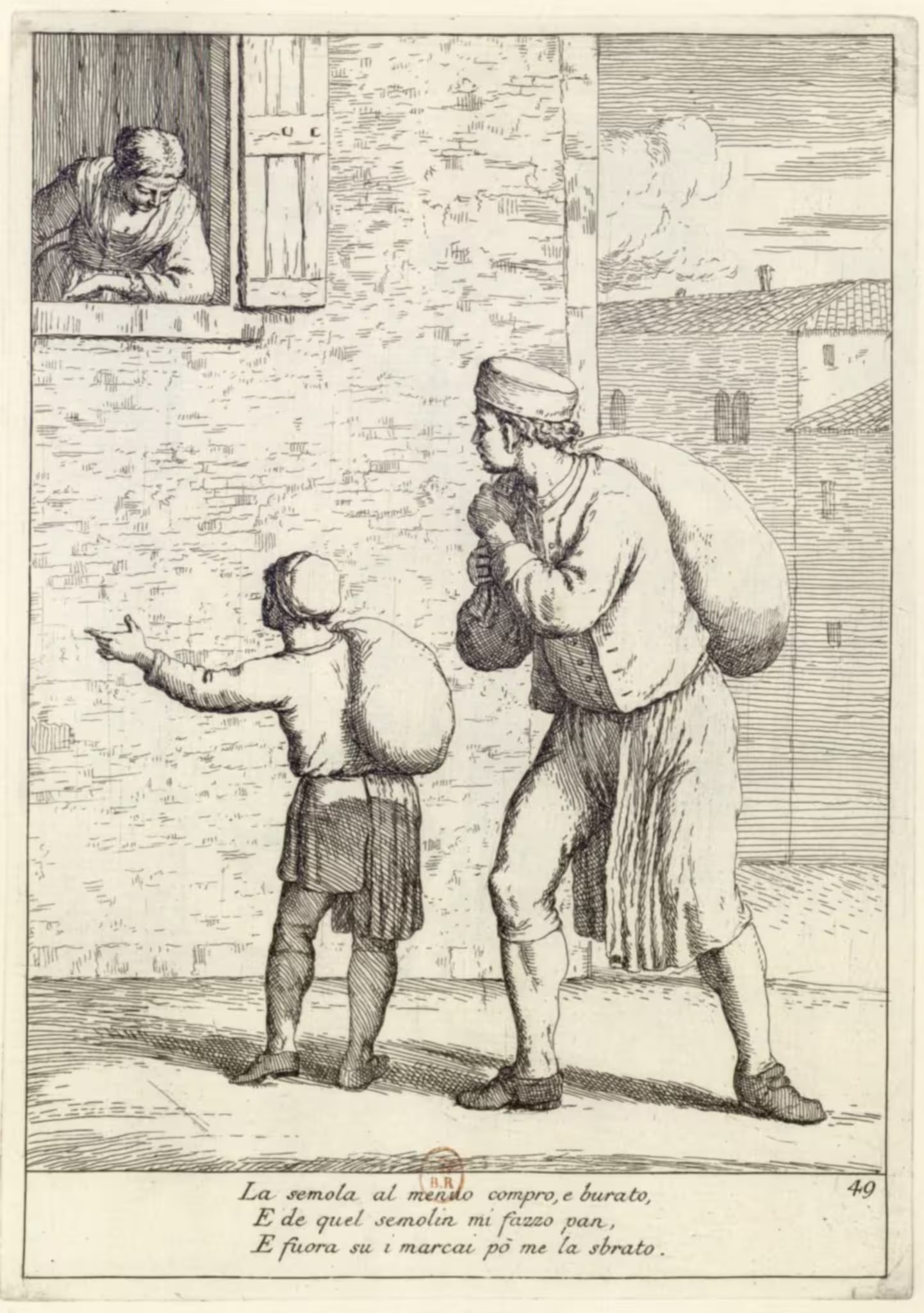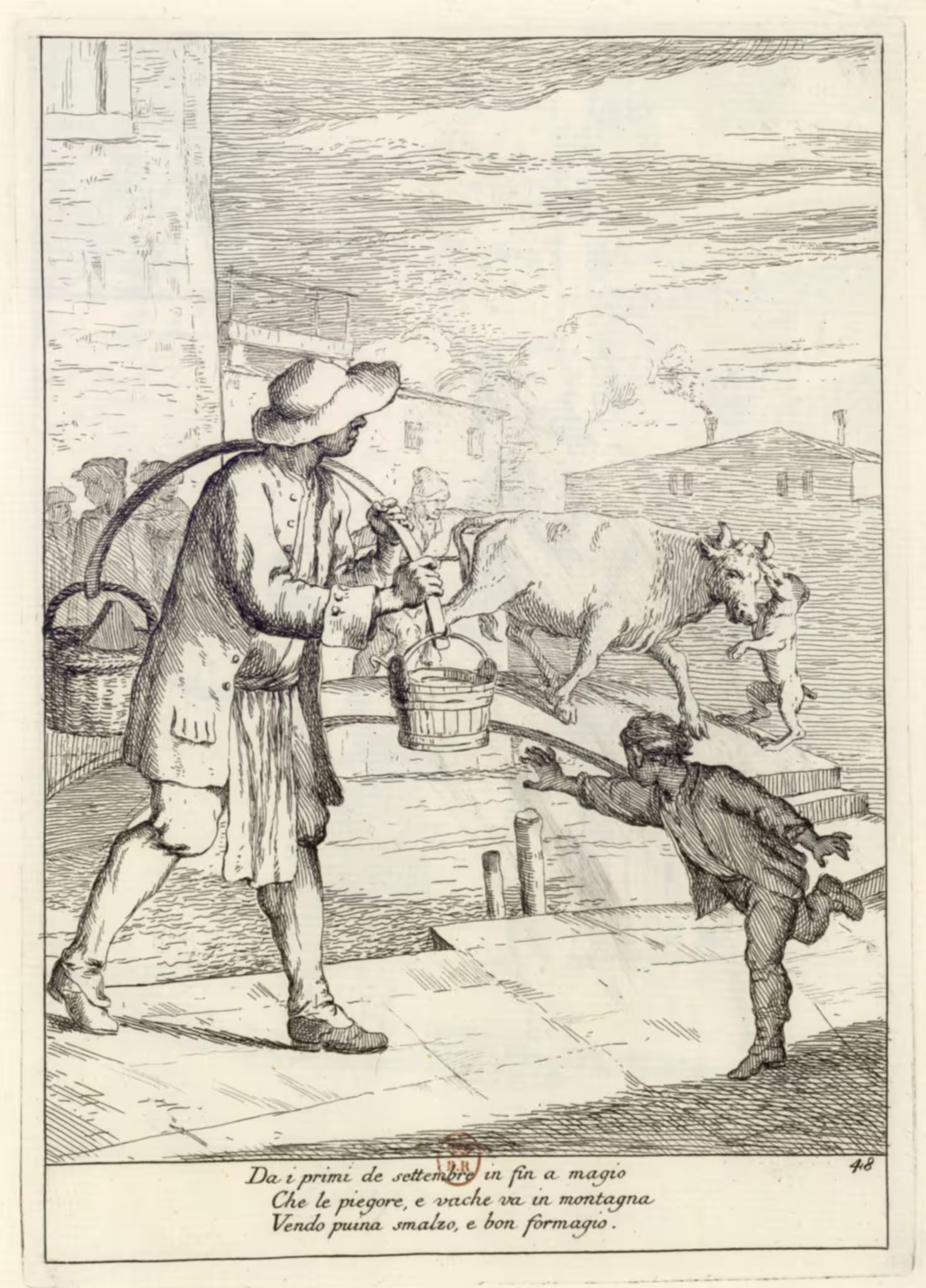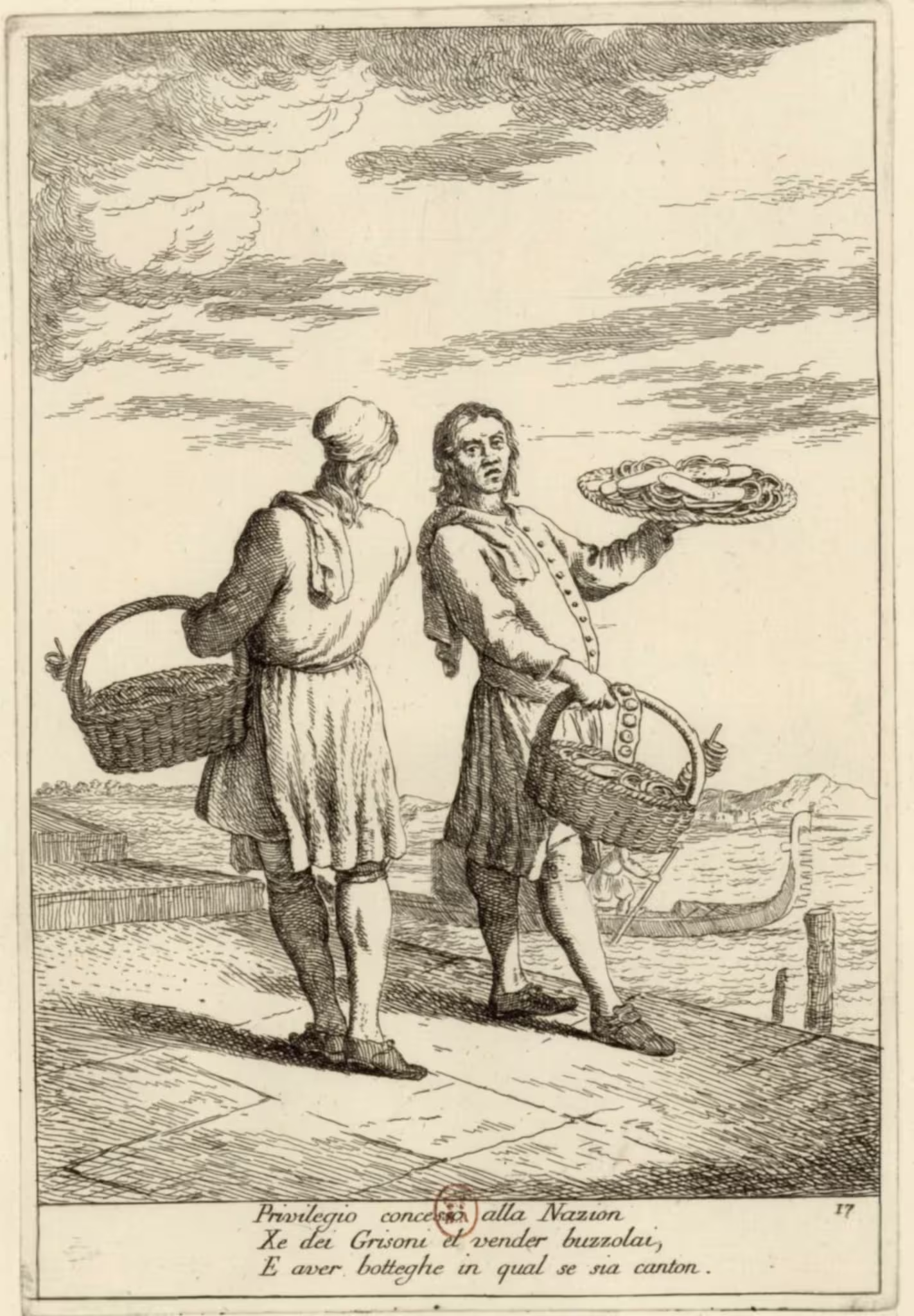Street vendors
-
Sabion — seller of fine sand for cleaning — Zompini — Arti #26
“Sabion” (seller of fine sand for cleaning) from “Arti che vanno per via” (1785) by Gaetano Zompini, translated by René Seindal.
-
Fiorer — street vendor of fresh flowers — Zompini — Arti #56
“Fiorer” (street vendor of fresh flowers) from “Arti che vanno per via” (1785) by Getano Zompini, translated by René Seindal.
-
Marcer — door to door salesman of cloth and sewing utensils — Zompini — Arti #28
“Marcer” (door to door salesman of cloth and sewing utensils) from “Arti che vanno per via” (1785) by Gaetano Zompini, translated by René Seindal.
-
L’Esca, e Solferini — street seller of tinder, matches and flint — Zompini — Arti #52
“L’Esca, e Solferini” (street seller of tinder, matches and flint) from “Arti che vanno per via” (1785) by Getano Zompini, translated by René Seindal.
-
Inchiostro — vendor of ink and rat poison — Zompini — Arti #46
“Inchiostro” (vendor of ink and rat poison) from “Arti che vanno per via” (1785) by Getano Zompini, translated by René Seindal.
-
Veri rotti — street vendor of glassware and collector of broken glass — Zompini — Arti #51
“Veri rotti” (street vendor of glassware and collector of broken glass) from “Arti che vanno per via” (1785) by Getano Zompini, translated by René Seindal.
-
Dolce de Vedeletto — street vendor of blood pudding — Zompini — Arti #35
“Dolce de Vedeletto” (street vendor of blood pudding) from “Arti che vanno per via” (1785) by Gaetano Zompini, translated by René Seindal.
-
Dalla Semola — collector of bran to make bread — Zompini — Arti #49
“Dalla Semola” (collector of bran to make bread) from “Arti che vanno per via” (1785) by Gaetano Zompini, translated by René Seindal.
-
Dalle Puine — vendor of ricotta and cheese — Zompini — Arti #48
“Dalle Puine” (vendor of ricotta and cheese) from “Arti che vanno per via” (1785) by Gaetano Zompini, translated by René Seindal.
-
Scaleter — seller of bussolai and ciambelle — Zompini — Arti #17
“Scaleter” (seller of bussolai and ciambelle) from “Arti che vanno per via” (1785) by Gaetano Zompini, translated by René Seindal.



